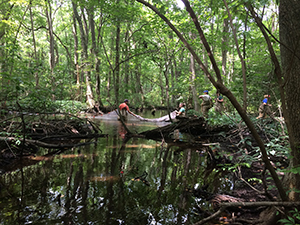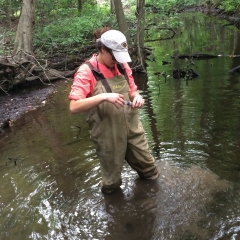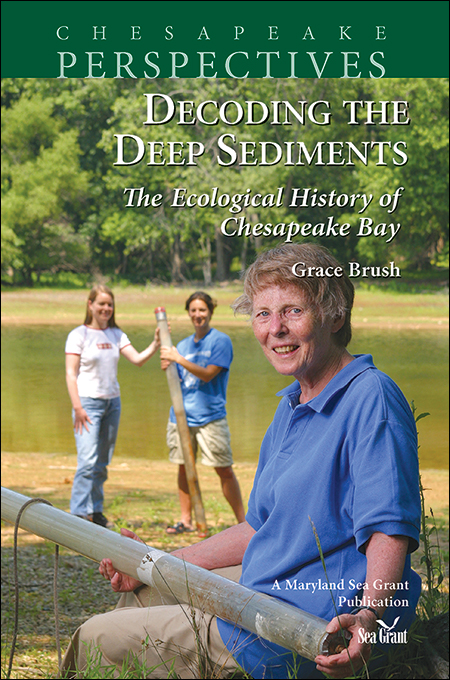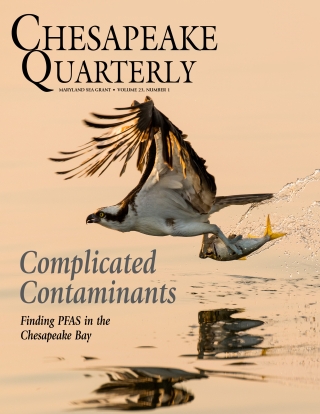Knauss legislative fellowships in Congress help build careers — and they're fun and educational. See our video and fact sheet for details.
CSI for Bacteria: Using DNA to Study the Condition of Maryland Streams
When people think bacteria, they often think disease. But in reality, pathogenic bacteria are a very small fraction of all bacteria. Bacteria are everywhere, and though small in size, these microscopic organisms are highly complex and play important roles in controlling global nutrient cycles. Over the past year, I have been looking specifically at bacteria in streams, or bacterial communities, across Maryland and trying to identify what bacteria are present and in what streams.
This information could be a useful supplement to existing measures of watershed health. Traditionally, managers have relied for this purpose on data about the presence and diversity of fish and benthic macroinvertebrates, such as mayflies, leeches, and worms. While these indices are useful, so are data about bacterial communities present in an ecosystem. Bacteria are an extremely diverse group of organisms, and changes in bacterial community assemblages may reflect changes in ecosystem health. The bacteria found in a forested stream often differ from those found in an urban or agricultural stream. This information may be useful in assessing the health of streams across Maryland.
All bacteria have DNA, the genetic code of life. A DNA sequence can be thought of as a code that dictates how an organism obtains its energy and how it grows. Individual taxa of bacteria carry unique regions of DNA, just as every person has a unique DNA sequence. Looking at this unique region of code, we can identify what bacteria are present and in what streams. It is very similar to human DNA fingerprinting, when an investigator matches a DNA sample to the sequence contained in a known source and determines from which person the sample came. Likewise, with current technology we can collect millions of DNA sequences from stream water and sediment samples. These sequences can be compared to well-curated databases and used to identify the bacteria present in each sample.
 |
| The MBSS crew setting up a net for electro-fishing. The types of fish present in a stream are often used as an indicator of water quality. Credit: Sarah Laperriere |
In the summer of 2014, I searched for bacteria by driving all around Maryland and sampling streams in partnership with the Maryland Biological Stream Survey (MBSS). Partnering with the MBSS allowed access to the program’s rich dataset of environmental variables and extensive manpower and expertise. The MBSS graciously sampled many of the streams that logistically would have been impossible for our research team to sample.
A typical sampling day started with loading a large backpack full of supplies, hopping into some waders, and setting out in search of a stream. Some streams were conveniently located next to a road, some required long hikes through the woods, and some involved tiring battles getting stuck in wetland mud. The sediment and water samples collected from these streams for DNA sequencing will provide insight into the bacterial communities present in 96 streams across Maryland.
Over the coming months, I will continue to analyze the copious amount of data collected from last year’s sampling expedition. We are seeing significant trends in bacterial community membership in the coastal, piedmont, and highland regions of Maryland. The next step is to tease out what bacterial taxa are driving these patterns. This spring and summer, our research team will be returning to a subset of streams sampled last year to examine how these ecosystems vary from year to year.
There are very few studies examining stream bacterial communities and tough, small bacteria are very important in ecosystem functioning. Hopefully, our project will provide insight into how stream bacterial communities vary across the different regions of Maryland and across different land use types.
Photo, top left: Sarah collecting a stream sediment core for grain size analysis. Credit: Sarah Laperriere.
See all posts to the Fellowship Experiences blog




